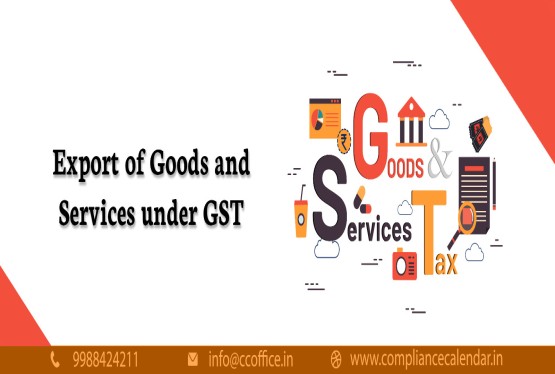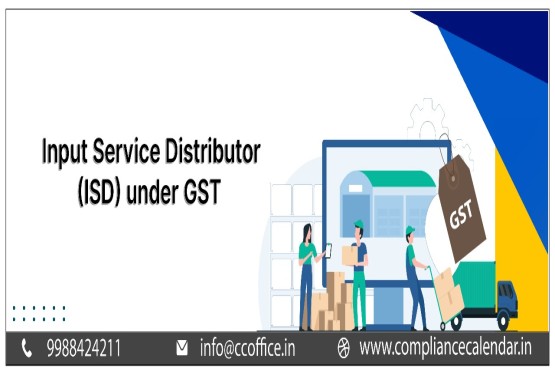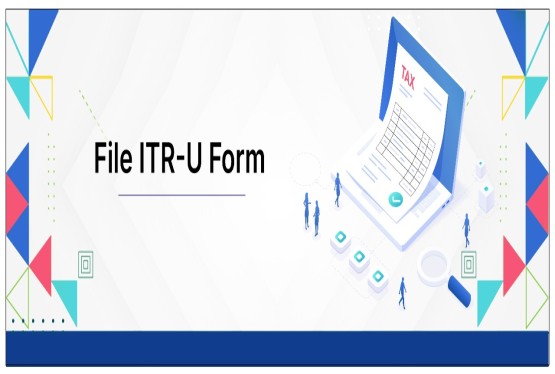Form 12BA is an important document under the Indian Income Tax Act that details perquisites, amenities, and fringe benefits provided by employers to employees. Primarily an annexure to Form 16, this form plays a significant role in tax compliance, especially for salaried individuals earning above Rs.1,50,000 annually. It provides a transparent view of all non-salary benefits, ensuring accurate computation of taxable income. This article delves into what Form 12BA is, its purpose, applicability, format, how to obtain and fill it, and its distinction from Form 12B.
What is Form 12BA?
Form 12BA is a statement issued by an employer to an employee outlining the nature and valuation of perquisites and other fringe benefits provided during a financial year. These perquisites may be either monetary or non-monetary and are part of the employee’s total salary package. The form helps both parties ensure precise income tax calculations and is mandatory for employees whose salary exceeds Rs.1,50,000 in a financial year. It supplements Form 16 and includes specific disclosures that are not available in the standard salary certificate, particularly regarding perks like accommodation, conveyance, stock options, and employer-paid expenses.
Purpose of Form 12BA
Form 12BA is a supplementary statement issued by employers to disclose all perquisites and fringe benefits provided to an employee in a financial year. It is attached to Form 16 and is mandatory for employees whose annual salary exceeds Rs.1,50,000.
This form plays a crucial role in maintaining tax transparency and compliance, especially for salaried individuals receiving various non-monetary benefits.
Key Objectives of Form 12BA
-
Ensures Transparency: Form 12BA clearly lists all non-salary components such as rent-free accommodation, company car usage, stock options, and concessional loans—ensuring full disclosure of the employee’s total compensation package.
-
Accurate Taxable Income Calculation: Many perks are taxable. This form helps determine their fair market value and ensures they are properly added to the employee’s gross income.
-
Supports Correct TDS Deduction: By identifying and valuing all benefits, Form 12BA allows employers to deduct TDS accurately on the total taxable income, reducing the risk of under-deduction and penalties.
-
Meets Legal Requirements: It complies with Section 17(2) of the Income Tax Act and Rule 26A of the Income Tax Rules, which mandate disclosure of perquisites as part of salary for tax purposes.
-
Simplifies ITR Filing for Employees: Employees use this form as a reference while filing their income tax returns, helping them avoid omissions and report income correctly.
-
Serves as Audit Documentation: During tax audits or assessments, Form 12BA provides evidence of declared salary components and TDS deductions, supporting both employer and employee claims.
Applicability of Form 12BA
The issuance of Form 12BA is guided by Rule 26A(2)(b) of the Income Tax Rules. It applies under the following conditions:
-
Mandatory if Salary > Rs.1,50,000: If the annual salary of an employee exceeds Rs.1,50,000, the employer must issue Form 12BA listing the value of all perquisites.
-
Not Mandatory if Salary ≤ Rs.1,50,000: In such cases, perquisites (if any) are simply disclosed in Part B of Form 16, and a separate Form 12BA is not needed.
-
Even with Zero Perquisites: If no perquisites are provided, the form must still be issued with a declaration stating that none were offered.
-
Definition of Salary for this Form includes:
-
Basic salary
-
Bonus and commissions
-
Allowances and monetary payments
-
-
Exclusions from Salary:
-
Employer’s contribution to provident fund
-
Tax-exempt allowances
-
Value of perquisites
-
Lump sum retirement benefits (e.g., gratuity, leave encashment)
-
Perquisites Covered in Form 12BA
Under Section 17(2) of the Income Tax Act, "perquisites" refer to various benefits—monetary and non-monetary—that an employer provides to an employee in addition to the regular salary. These benefits are taxable and must be disclosed in Form 12BA. Below are the key types of perquisites that are typically reported:
-
Rent-Free or Concessional Accommodation: If an employer provides housing to an employee either rent-free or at a concessional rate, the value of such accommodation is treated as a taxable perquisite. The valuation depends on whether the accommodation is owned or leased by the employer and its location (metro or non-metro).
-
Payment of Utility Bills by Employer: When the employer pays for the employee’s personal utility expenses—such as electricity, water, gas, or telephone charges—the amount paid is considered a taxable benefit, unless it is work-related.
-
Reimbursement of Medical or Educational Expenses: If the employer reimburses costs incurred by the employee for medical treatment or for children’s education, these reimbursements are considered perquisites and are taxable unless specifically exempt under certain conditions or limits (e.g., up to Rs.15,000 for medical reimbursement before FY 2018–19).
-
Use of Company-Owned Vehicles for Personal Use: When an employee is provided with a car by the company, and it is used for personal purposes, the value of such benefit—fuel, driver, maintenance—is treated as a taxable perquisite. The taxability depends on whether the car is used solely for personal purposes or for both personal and official work.
-
Memberships and Sponsored Holidays: If the employer pays for or reimburses costs of club memberships (golf clubs, gyms, etc.) or holidays/vacations, these are considered taxable fringe benefits unless used strictly for official purposes and appropriately documented.
-
Employee Stock Options (ESOPs) and Sweat Equity Shares: When employees are granted stock options or sweat equity shares at a concessional rate or free of cost, the difference between the market price and the price paid by the employee is treated as a perquisite and taxed accordingly.
-
Employer Contributions to Life Insurance or Superannuation Schemes: Contributions made by the employer towards life insurance premiums (beyond exempt limits) or to an approved superannuation fund exceeding Rs.1,50,000 annually are treated as taxable perquisites.
-
Travel, Conveyance, or Transport Facility: If the employer bears the cost of personal travel or provides transport facilities (e.g., chauffeur-driven car), the value of such services is considered taxable unless they meet exemption criteria (like free bus services to and from the office).
-
Concessional or Free Amenities and Benefits: Any other facility, benefit, or amenity extended by the employer—such as concessional loans, subsidized meals, or gifts—is also classified as a perquisite if it offers a personal benefit to the employee. These are subject to valuation rules as specified by the Income Tax Department.
How to Download Form 12BA Online?
Step 1: Visit the Income Tax Portal: Go to the official Income Tax Department website: https://www.incometax.gov.in
Step 2: Log In (If Required): Use your credentials (User ID, PAN/Aadhaar, Password, and Captcha) to log in. For form downloads, login may not always be necessary.
Step 3: Go to the “Downloads” Section: From the homepage, click on the “Downloads” tab in the top menu.
Step 4: Select “Income Tax Forms”: Under Downloads, choose “Income Tax Forms” or navigate to “Forms/Downloads” relevant to TDS or Salary.
Step 5: Search and Download “Form 12BA”: Locate Form 12BA from the list (usually under forms related to TDS and Salary). Click to download the form in Excel or PDF format.
Step 6: Extract & Open the File: If it’s in a zip folder, extract the files and open the form in the required software (MS Excel or Java Utility, as applicable).
How to Fill Out Form 12BA?
Step 1: Enter Employee Details: Begin by entering the employee’s basic information, including their full name, PAN (Permanent Account Number), and Aadhaar number (if available). Also include their job designation and employee code, if applicable, to ensure accurate identification.
Step 2: Fill Employer Details: Next, provide the employer’s details such as the full name and address of the organization. Include the TAN (Tax Deduction and Collection Account Number), the employer’s PAN, and the TDS jurisdiction or circle under which the organization falls.
Step 3: Provide Salary Components: Record the employee’s total gross salary, excluding any perquisites. This should include all fixed and variable salary components like basic pay, bonuses, and various allowances, giving a clear picture of the direct income.
Step 4: List and Value Perquisites: List all perquisites offered to the employee, such as rent-free or concessional accommodation, company car usage, stock options, or concessional education. These should be valued according to the fair market value and as per the Income Tax Rules. Any amount recovered from the employee for these perks should be deducted from the valuation.
Step 5: Tax Computation: Calculate the total taxable value of all perquisites and add it to the gross salary to determine the employee’s total taxable income. Be sure to note any applicable exemptions or deductions allowed under the Income Tax Act.
Step 6: Declaration Section: The form must be signed and dated by an authorized representative of the employer. The name and designation of the signing authority should be mentioned, along with the official seal or stamp of the organization, if required.
Step 7: Submission: Once completed, a copy of Form 12BA should be provided to the employee along with Form 16. Employers must also keep a copy for internal records and for submission during audits or inspections if necessary.
Difference Between Form 12B and Form 12BA
Despite being governed by the same rule (Rule 26), Form 12B and Form 12BA serve distinct purposes:
|
Features |
Form 12B |
Form 12BA |
|
Who Fills It |
Employee |
Employer |
|
Purpose |
Reporting previous income during job switch |
Reporting perquisites |
|
When Used |
When an employee joins mid-year |
At end of financial year |
|
Recipient |
New employer |
Employee |
|
Contains |
Income and TDS details from previous employer |
Breakdown of perquisites |
Conclusion
Form 12BA is an important document for ensuring accurate tax computation, especially for employees receiving various perks and non-salary benefits from their employers. Employers are obligated to issue this form annually for employees earning above Rs.1,50,000, regardless of whether any perquisites are provided.
If you have any queries or questions regarding Form 12BA, then you can connect with the experts through email info@ccoffice.in or Call/whatsapp at +91 9988424211.
Frequently Asked Questions (FAQs)
Q1. What is Form 12BA and who needs it?
Ans. Form 12BA is a tax document that provides a detailed summary of perquisites and fringe benefits given by an employer to an employee. It’s mandatory for employees earning more than Rs.1,50,000 annually and is issued as an annexure to Form 16.
Q2. What details are included in Form 12BA?
Ans. The form lists the nature and value of non-salary perks like rent-free accommodation, company car, stock options, and other benefits, which aren’t fully covered in Form 16.
Q3. Why is Form 12BA important for employees and employers?
Ans. For employees, it helps understand and report taxable perks accurately. For employers, it ensures full disclosure and aids in correct TDS deductions, supporting tax compliance.
Q4. How is Form 12BA connected to Form 16?
Ans. While Form 16 summarizes salary and TDS, Form 12BA gives a detailed account of perquisites, making it a crucial supplement for employees with higher earnings.
Q5. What are the main goals of Form 12BA?
Ans. It promotes transparency in compensation, helps calculate taxable income accurately, and ensures proper TDS deduction on non-salary benefits.









_crop10_thumb.jpg)


















































































_for_FY_2025-26_crop10_thumb.jpg)












_learn_crop10_thumb.jpg)








_Filing_Due_Dates_for_FY_2024-25_learn_crop10_thumb.jpeg)























